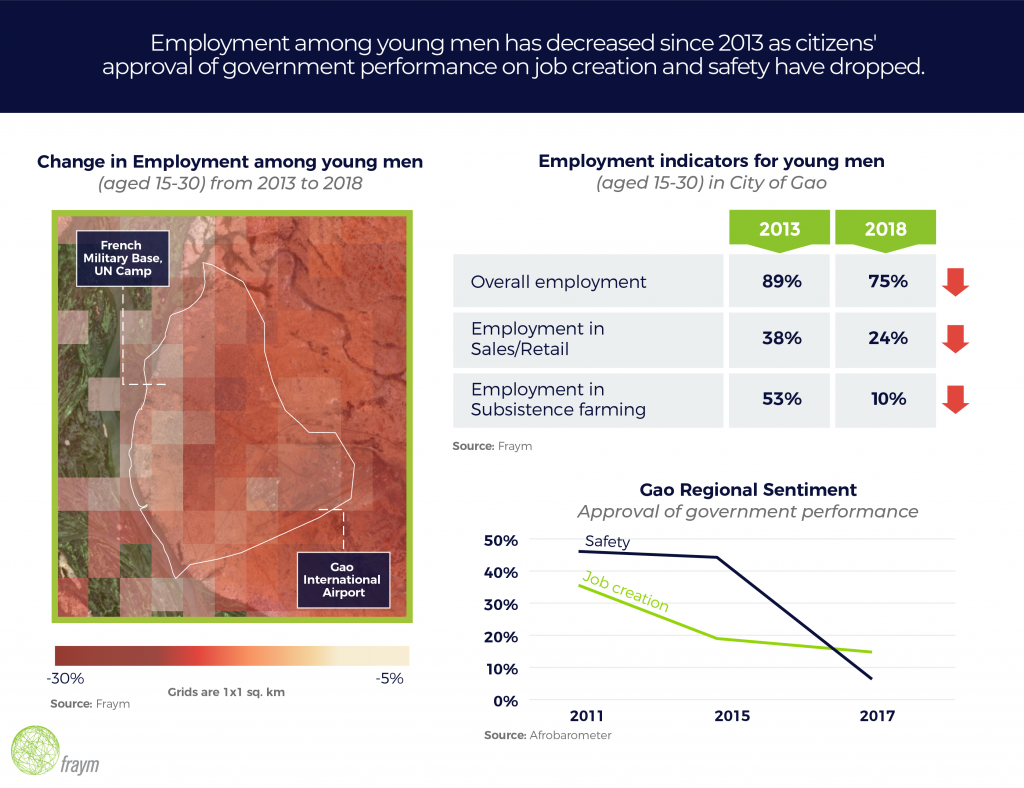Build Effective Social and Behavior Change Strategies

The recent coup in Mali prompted us to look again at the data and tools we previously built to anticipate localized instability in the country. Below, we illustrate how our data and approach can be used to understand the driving factors behind unrest at a neighborhood level – and in an increasingly unpredictable Mali, to provide valuable insight into a critical strategic area.
Specifically, Fraym investigated vulnerability to jihadist violence surrounding key points of interest at the neighborhood level in the city of Gao, north of the recent coup’s epicenter in Bamako and an area that has experienced over 500 armed clashes since 2012. To do so, Fraym produced geospatial analysis using our socioeconomic data surrounding high-value points of interest—as well as information on population sentiment that could contribute to local support for extremist groups.
f

I
Fraym’s harmonized datasets highlighted stark differences in socioeconomic indicators in areas surrounding a UN mission super camp and French military base, which suffered jihadist attacks in 2018 and 2019. For example, using access to services as a proxy measure for government presence and effectiveness, Fraym noted a troubling gap. Despite a 25% growth in population, electricity access and primary school education have remained relatively stagnant. Triangulated with regional sentiment data, we saw a spike in public frustration over the past eight years when it comes to the government’s provision of reliable electricity and education. The disparity between the UN camp and its surrounding neighborhoods has the potential to worsen perceptions and fuel resentment.
In addition, Fraym noted declining employment rates in the city over the years since violence increased, a factor which could drive jihadist recruitment in Gao city and elsewhere. Employment rates have received the lowest approval ratings from Gao citizens in recent years, a complaint that our data confirms and quantifies. According to Fraym data, employment decreased most dramatically in the areas east of the super camp. Among young men, the target recruitment pool of many jihadist groups, employment has declined considerably resulting in lower numbers of well-paying jobs in the city.
Fraym’s unique data translates research about jihadist recruitment into actionable plans for tracking future instability. In strategic locations in Gao City, Fraym data tells us that people are losing faith in institutions as their quality of life deteriorates–while the UN Super Camp next door operates with reliable electricity, food, and services in their communities. Mali is facing one of its most turbulent periods of the past decade. Fraym data provides context and numbers for this city and others at the neighborhood level, giving our partners detailed insight and quantified information on what might fuel further violence and instability in a rapidly changing environment.